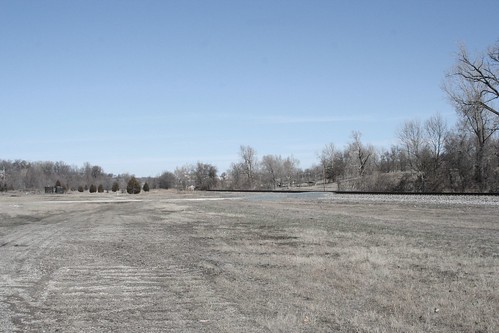Since Joplin first began as a rough mining town on the edge of the Ozarks, it has seen its share of violence, though many of the crimes have long since been forgotten. In the spring of 1899, the Joplin Daily News trumpeted, “The most startling discovery in crime ever known in the annals of Joplin was made about noon today at a tent in the Kansas City Bottom[s] near the mouth of St. Joe Hollow. Five persons were found dead and their bodies are in a horrible state of decomposition.”
According the news account, two young boys, Mack Hutchinson and Walter Towsley, were in the area when they noticed swarms of flies and a strong stench in the air. They followed the smell to a tent 8×12 in size. What they found was horrifying: “the headless body of a baby on the outside, and on peering inside they discovered the dead bodies of two more children, a man and a woman.” After alerting authorities, a large crowd gathered around the tent, where further investigation showed that the man, James Moss, had bludgeoned his wife and two of his children to death before beheading a third child. He then shot himself with a .38 revolver.
Interviews with neighbors revealed the family had been in the Joplin area for around two months and that the father, James Moss, had worked “scrapping ore.” No one the News reporter spoke to had heard the gunshot or any sounds of a struggle even though their closest neighbor lived only 150 feet away from the Moss family tent. The reporter later encountered two women who claimed that they had heard a single gunshot on a Tuesday evening, but thought nothing of it. The scene, it later was learned, was “within a stone’s throw of the old pump shaft where Lewis Channell was killed by Charley Seaton a number of years ago.” The bodies were claimed by the coroner and taken from the scene.
Examination of the Moss’ belongings revealed a few details about the family. The Moss’ originally hailed from Independence, Missouri. James E. Moss was 35 years old and was a former stagecoach driver between Deadwood and Bismarck, North Dakota, up to 1881. He also worked as a driver for the Emery, Bird, & Thayer department store in Kansas City. It later appeared that Moss, his wife Ida, and his children had lived for a brief time in Los Angeles, California, before heading back east to Missouri. The News reporter remarked James’ possessions showed that he “was somewhat of a misanthropist, judging from some of his writings, and was a reader of Tom Paine.” Moss owned copies of Paine’s Age of Reason and Rights of Man that “appeared to have been read considerably.” The reporter mused, “He probably became despondent and sore on the world, and while in that mood murdered his family and then ended his own life.” The only money found was $1.25.
The Kansas City Journal observed, “Moss was an ardent admirer of Robert G. Ingersoll, especially of his views on suicide, and being a man of intense convictions relative to this and other religious views, it is believed here that he was crazy.” A single note was discovered at the scene of the crime, written in Moss’ hand, which read, “There was no truer wife nor lovelier children than mine. J.E. Moss.”
A few days after the murders occurred, Ida Moss’ brother and half -sister arrived to collect the family’s belongings and shipped them to Independence. The tent, bedding, and other items that remained were then burned. The bodies of the family were to be sent back to Independence within the year for burial. The murders were eventually forgotten over time, but remain one of the grisliest to occur in Joplin’s history.




When we consider the many atrocities in today’s news, we wonder what pressures or events of today’s society creates the type of sick mind who brutally takes the lives of loved ones. It saddens one to realize
that similar influences produced similar results over a hundred years ago.